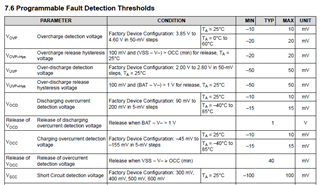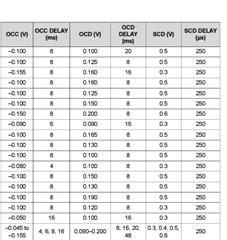Hi,
I am using BQ29707DSET in my application. In the datasheet it is mentioned that we can program fault detection threshold. It is shown below;

I cannot seem to find how to program them since there is no communication interface to the IC.
Please help on how to configure the threshold to the requirement.
Thank you,
Vedashree


